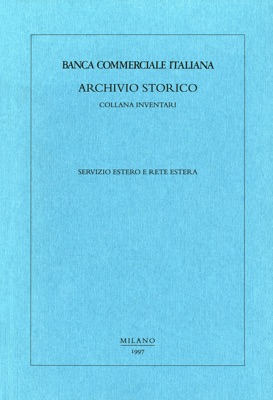
Servizio Estero e rete estera
1920-1965
BCI was an international institution from the very onset: it was founded (1894) by a “pool” of German, Austrian and Swiss banks, while 1899 saw the acquisition of a significant stake by a French partner, Paribas. BCI has been a member of the international banking elite since its foundation; it was run as a universal bank and its expertise on arbitrage and foreign exchange was unrivalled in Italy, with an extensive network of correspondent banks on every continent. It embarked on multinational expansion in the 1910s, directly investing in capital, personnel and professional know-how in South America, Eastern Europe and around the Mediterranean. Essential to Comit’s foreign network were its branches in London (1911) and New York (1918), as well as the extensive short-term credit for imports and exports (bankers’ acceptances or “bills of exchange”). By 1930 – going against the nationalist trend of the time – BCI had 210 banking offices in 23 countries outside of Italy. With this structure in place, for decades BCI was an unrivalled “pacemaker” for international expansion by Italy’s leading businesses.
As well as inventories of the documents, the volume also includes invaluable features such as maps, tables of BCI branches and affiliates with lists of their managers, a brief timeline from its foundation up to 1945 and an appendix with an unpublished photo album of the buildings housing its ‘Branches, foundations and associate banks overseas’ from the 1930s, part of the Historical Archives collections.